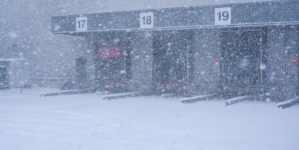-
Women Leading the Way in the UK Material Handling Industry - December 12, 2025
-
LiftEx 2025 live from Liverpool - December 11, 2025
-
DATA ANALYSIS – THE FOUNDATION OF EVERY PEAK SEASON - December 5, 2025
-
Creative education specialists Creative Hut give 3PL full marks for onboarding excellence - December 5, 2025
-
Unlimited Industries raises $12M to build the AI construction company that will power America’s future - December 4, 2025
-
Scottish Leather Group gets full-support solution from Rushlift - December 4, 2025
-
Etaily lands strategic investment from Japan’s SMBC – bringing total funding to $24M for Social Commerce enablement platform - December 4, 2025
-
Winners lift their LEEA Awards and raise the industry - December 4, 2025
-
Prism eLogistics and Brand Angels Partnership Gives Brands the Full Package - December 3, 2025
-
New data shows Tesla in danger of losing its way as European consideration to buy Chinese cars jumps 16% in 12 months - December 3, 2025
Safety Checklist for Your Racking System.
Racking systems make the material handling and supply chain management industries far easier to tackle and handle. These systems arrange inventory, streamline operations, and make the jobs of workers easier. Whilst these mechanisms are safe to use, there are certain measures you can take to assure this to the fullest extent. Are you trying to determine how to make your racking system safer? Are you looking into a new racking system and hoping to find out how this can be done safely? Are you unsure of some of the safety regulations and directives concerning these systems? All your answers can be found here. Here is a comprehensive safety checklist for your racking system:
There are two governing bodies that determine how to safely use pallet racking systems. These two institutions are the American National Standards Institution (ANSI) and OSHA otherwise known as the Occupational Health and Safety Administration. According to Grainger, each body has composed, authored, and implemented procedures and protocol to help your business use these devices appropriately, effectively, and safely. In addition to visiting the aforementioned link, you can also log onto each party’s respective website to find updates to these directives and a more robust compilation of these guidelines. Here are a few extra bullet-points to consider as well if you were to conduct your own pallet racking system inspection.
1. Damage – When taking a look at your racking system, it is imperative to inspect for any visible defects or damages to the shelves and their respective units. Plumbing is another thing worth focusing on as each shelve should be straight and not be bent or warped in any shape or form. This is to ensure that all goods are stored safely and that the weight is distributed evenly across the shelving units. Doing this prevents collapses and thus lowers the risk of accident.
2. Load Capacity- Different racking systems are rated for a wide range of load capacities. It is important to review these specifications prior to storing your raw goods, products, and materials. Overloading can lead to a full malfunction of the system. Moreover, even if you were to do so and not see any immediate effects there is no chance that any inspector or agent would pass an inspection without an issuing of fines and citations. These parameters are outlined in the documents that accompany your shelving system it is essential to adhere to them.
3. Rust and Corrosion –Rust and corrosion can make any racking system healthy and safe to use into one that is dangerous and accident-prone. Rust and corrosion provides a wide range of latent effects in addition to impinging upon performance. However, oxidation causes the metal of the system to weaken. Oxidation is a chemical reaction where water vapor in the air condenses and then deteriorates the components. A similar phenomenon occurs with bicycles that remain unused for an extended period of time. It is important to stay on top of your shelving units by using substances such as WD-40 to prevent and reverse any rusting. Doing so will allow you to get extended mileage out of your racking system.
About Tom Reddon
Tom Reddon is a forklift specialist and blog manager for the National Forklift Exchange. He also sits on the Material Handling Equipment Distributors Association (MHEDA) Executive Dialogue team. Follow him on Twitter at @TomReddon.
National Forklift Exchange has a website here: http://www.nfe-lifts.com/

































